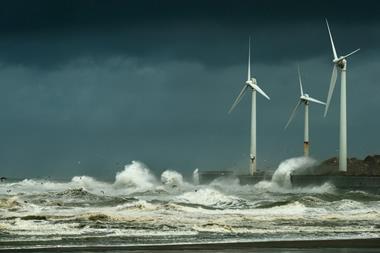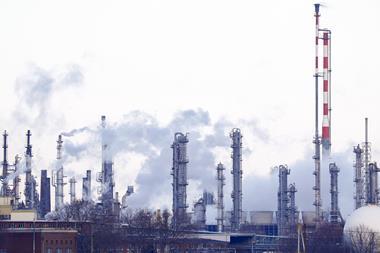Recent changes to the UK’s carbon trading system send the wrong signal to industry and weaken the country’s chances of achieving net zero, according to energy industry observers.
Last month, the authority running the emissions trading scheme (ETS) – made up of the UK and devolved governments – announced a new limit on emissions for power generators, carbon intensive industry and aviation, as well as an expansion of the scheme to the maritime and waste sectors.
The overall emissions cap is being reduced to be consistent with net zero, although this will be at the most generous end of the range. Reducing the allowances available under the scheme aims to incentivise companies to cut their emissions.
However, additional allowances of 53.5 million tonnes (unused from previous years) will be released between 2024 and 2027 to ‘smooth the transition’ and allow the market and polluters to adapt to the new cap. Industry is also being given a greater share of the overall cap than at present, despite actual industry emissions being below the level of the cap in each of the last two years.
The UK ETS was launched in 2021 and initially carbon prices closely matched those in the EU’s equivalent scheme, but in recent months these have diverged. According to carbon data provider SparkChange, this is in large part because increased clean energy production has meant less demand for carbon permits from the UK power sector. But since the changes in early July, prices on the UK ETS have fallen further: at the beginning of August carbon was trading at £42.14 per tonne – over 40% lower than the carbon price in the EU system.
‘When you don’t have that pathway of [the carbon price] getting ever more expensive, that takes away a big incentive to start investing in those decarbonisation technologies – which is really worrying in terms of trying to get to net zero,’ says Mark Williams, senior analyst at Energy UK, the industry’s trade body.
He suggests that if the divergence becomes permanent, it will damage the investment case for renewables and low carbon technology more generally.
As the price of carbon is included in the cost of electricity production from gas ‘those gas plants become more competitive compared to other forms of electricity’ notes Williams.
‘And because our electricity market is structured such that the price of electricity generated by gas sets the price throughout the whole market … you’re going to see the price paid for that renewable electricity reduce, which again, is going to harm the investment case,’ he adds. ‘It’s also going to be particularly worrying for the development of things like carbon capture, utilisation and storage (CCUS), as a big part of the business case of that is that if you take your carbon and bury it, then you’re not going to have to pay the costs of emitting it.’
The government has just announced another two CCUS cluster projects, in north-east Scotland and the Humber, that could be operational by 2030 subject to negotiations. It has also just finished consultations on including greenhouse gas removals in the UK ETS.
‘I just don’t see how the weakening of carbon pricing policies helps with [the government’s] commitment to support carbon removal and CCUS,’ says Imperial College London researcher Anastasiya Ostrovnaya, an expert on climate risks faced by financial institutions and investors. ‘Will they just subsidise it, or are they going to drop that commitment as well?’
A lower carbon price could ultimately damage UK exports to the EU, which is introducing a carbon border adjustment mechanism in 2026. This is designed to stop EU producers being undercut by industry in countries with weaker carbon pricing policies. UK industry ‘would have to pay the EU carbon price if we don’t pay enough within our own borders,’ notes Ostrovnaya.
The UK scheme will be expanded to cover large maritime vessels in UK waters from 2026 – two years later than the EU – and to the energy from waste and waste incineration sectors from 2028. Consultations are underway on including methane emissions from the oil and gas sector.

















No comments yet